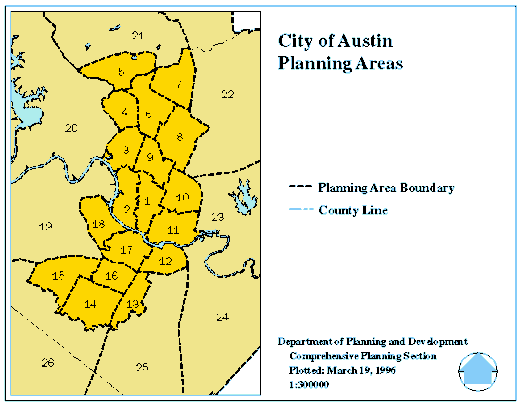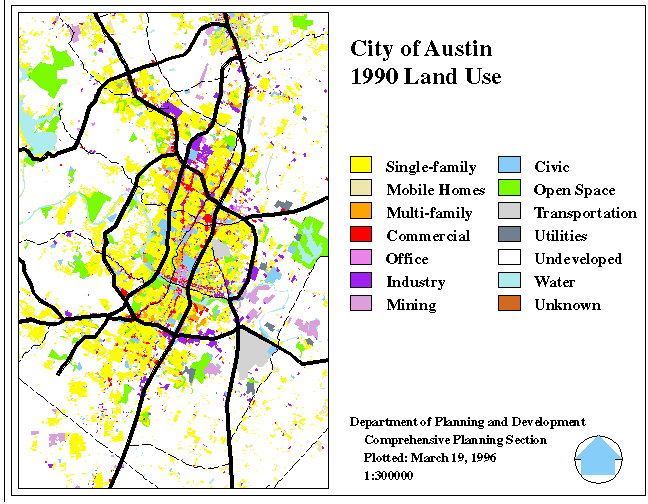 Loss of Greenspace in the City of
Austin from the Grant of Minor Variances.
Loss of Greenspace in the City of
Austin from the Grant of Minor Variances. 

Part One of this
project examines the feasibility of, and demonstrates the possible applications
in, conducting a zoning research project on the World Wide Web.
Please click all images.
 Zoning
by-laws regulate land use in the United States. These laws divide the land
user by intensity. The intensity-lowest users are single family residences
and the intensity-highest users are high-rise apartments and business or
industrial buildings.
Zoning
by-laws regulate land use in the United States. These laws divide the land
user by intensity. The intensity-lowest users are single family residences
and the intensity-highest users are high-rise apartments and business or
industrial buildings.
Zoning laws have different
requirements depending on the intensity of usage. For example, a single
family residence would have to leave a certain amount of land open (for
trees, shrubs and grass or greenspace) in
their front, side and backyard under the law. An amendment to the law is
needed to change these requirements.
However, in each city
there is a Board
of Minor Variance which has the power to grant "relief" to its residents without amending the zoning laws. Under the law, violations in zoning are
allowed when they are "justified." The Board of Minor Variance
considers hundreds of requests
each year.
 |